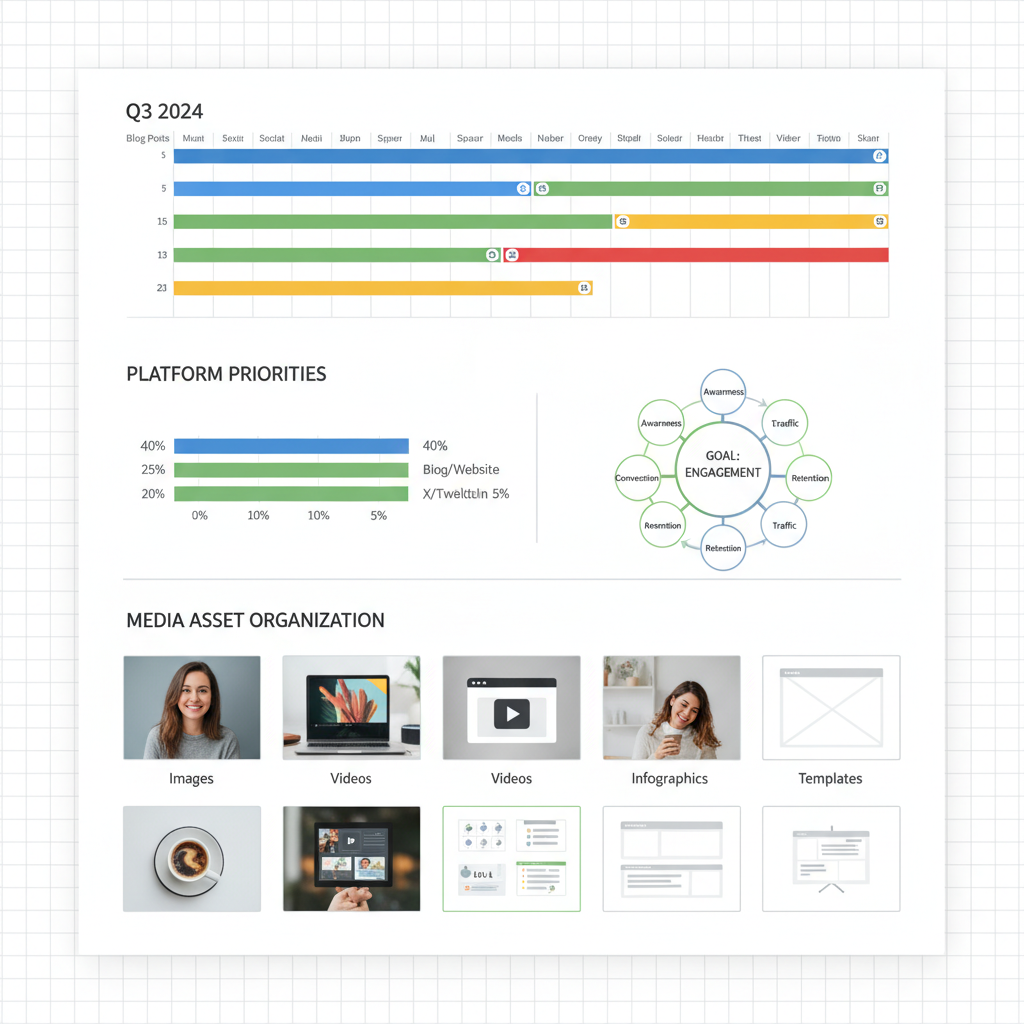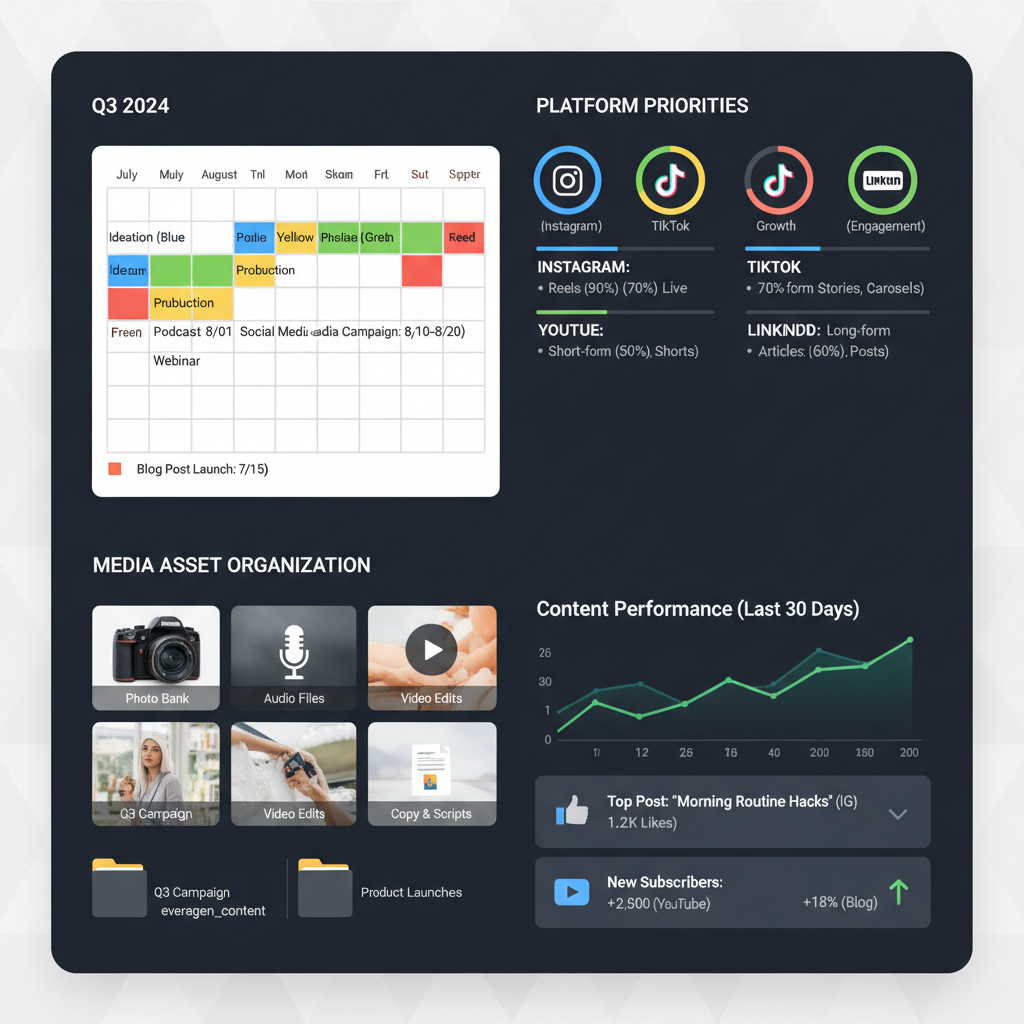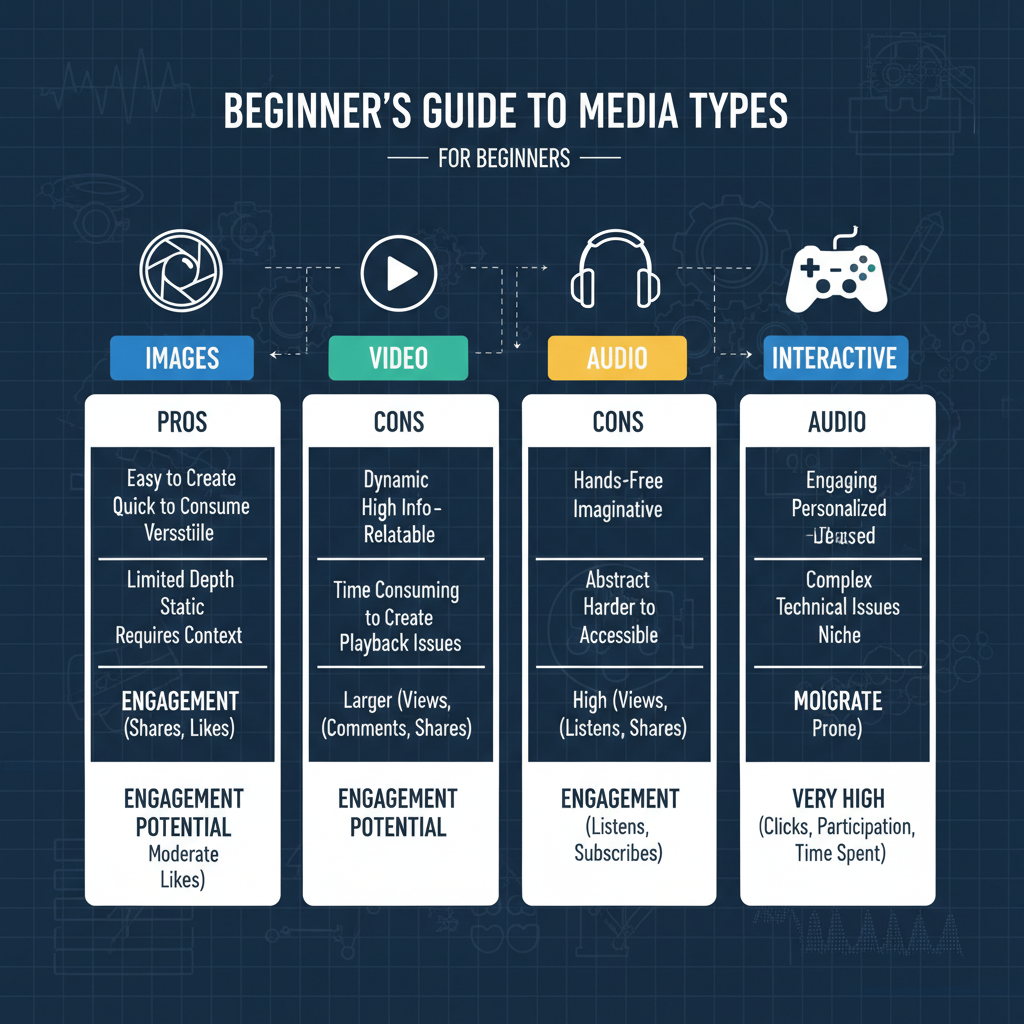Multimedia Content Creation Tips for Beginners
Learn essential multimedia content creation tips for beginners, covering strategy, tools, video production, and combining formats for engagement.

Multimedia Content Creation Tips for Beginners
Creating engaging, high-quality multimedia content is essential for reaching and resonating with modern audiences. Whether you’re crafting videos, podcasts, animations, or combining visuals with compelling copy, adopting a strategic approach from the start will help you succeed. This beginner-friendly guide explores multimedia content creation fundamentals, including media types, tools, optimization techniques, and ways to repurpose your work for maximum engagement and visibility.

---
Understanding What Multimedia Content Is
Multimedia content integrates multiple communication formats into a single message or campaign. It’s not just text — it can include:
- Text – Articles, captions, blog posts
- Images – Photos, infographics, illustrations
- Audio – Podcasts, narrations, background music
- Video – Vlogs, tutorials, interviews
- Animation – Motion graphics, explainer videos
Mixing these formats allows you to reach audiences with different learning styles and preferences, making your message more memorable and impactful.
---
Identifying Your Target Audience and Preferred Platforms
Before you start creating, pinpoint who you are speaking to:
- Demographics – Age, location, profession
- Psychographics – Interests, aspirations, challenges
- Platform Habits – Do they prefer Instagram, YouTube, TikTok, LinkedIn, or podcasts?
Knowing your audience’s habits lets you tailor content formats, style, and messaging for better engagement and relevance.
---
Choosing the Right Tools and Software for Creation
The tools you choose greatly influence your workflow and finished product quality.
| Category | Budget-Friendly Options | Professional Tools |
|---|---|---|
| Image Editing | Canva, Pixlr | Adobe Photoshop, Affinity Photo |
| Video Editing | iMovie, Shotcut | Adobe Premiere Pro, Final Cut Pro |
| Audio Production | Audacity, GarageBand | Adobe Audition, Logic Pro X |
| Animation | Animaker, Blender | Adobe After Effects, Cinema 4D |
Opt for software that suits your budget and skill level, then consider upgrading as your experience grows.
---
Planning Your Content Strategy
A clear content strategy keeps your multimedia efforts on track:
- Set Goals – Build brand awareness, educate, or increase sales
- Develop a Content Calendar – Plan and schedule posts for consistency
- Define Formats – Blogs, podcasts, videos, reels, or stories
- Measure Impact – Include checkpoints to review performance

---
Combining Different Media Types for Maximum Engagement
Leverage synergy between media types to enhance your message:
- Add videos to blog posts to improve session duration
- Summarize podcast episodes using infographics
- Pair behind-the-scenes photos with an animation teaser
Always maintain consistent style, tone, and branding when blending media formats to avoid audience confusion.
---
Tips for Writing Compelling Copy to Complement Visuals
Even the best visuals need persuasive words:
- Headline Power – Short, intriguing, and relevant
- Call-to-Action (CTA) – Clearly guide the next step
- Tone Consistency – Match writing style to the visual tone
- Value-first Approach – Provide useful information before promotional content
Use copywriting to support visual materials, creating a cohesive and persuasive experience.
---
Best Practices for Shooting and Editing Videos
Professional-looking videos require proper planning:
- Pre-Production – Outline scripts, storyboards, and locations
- Lighting – Prefer natural light; otherwise, use soft box setups
- Audio Quality – External microphones boost clarity
- Framing – Apply the rule of thirds for visual balance
- Editing Flow – Keep transitions smooth and color grading consistent
## Example: exporting a video in high resolution using ffmpeg
ffmpeg -i input.mp4 -vf "scale=1920:1080" -c:v libx264 -crf 20 -preset fast output.mp4---
Audio Production Basics
Strong audio improves comprehension and audience satisfaction:
- Podcasts – Record in a quiet space
- Sound Bites – Perfect for social media or teasers
- Background Music – Choose royalty-free tracks that match content tone
Follow an editing workflow—noise reduction, equalization, compression, mastering—for polished sound.
---
Animation and Motion Graphics Fundamentals
Animations elevate content and simplify complex ideas:
- Storyboarding – Plot the sequence before animating
- Consistency – Use a unified color scheme and fonts
- Transitions – Keep motions fluid and engaging
- Duration – Stay concise unless teaching in-depth concepts
Mastering keyframe animation ensures dynamic yet balanced motion graphics.

---
Optimize Multimedia Content for SEO and Social Media Algorithms
Boost visibility by optimizing content:
- Keywords – Apply relevant terms to titles, descriptions, and alt text
- Meta Data – Tag videos and images appropriately
- Thumbnail Design – Attractive visuals encourage clicks
- Timing – Share content when your audience is most active
Adapt strategies for each platform’s unique ranking factors and trends.
---
Strategies for Repurposing Content Across Multiple Platforms
Extend content life by repurposing:
- Edit webinars into short YouTube clips
- Convert podcast transcripts into articles
- Transform reports into infographics
- Use existing videos for Instagram Stories
Customize each format to align with its platform’s style and audience behavior.
---
Analyzing Performance Metrics and Adjusting Your Strategy
Measure success to improve your creative direction:
- Engagement Rate – Likes, comments, shares
- Reach and Impressions – Audience exposure
- Conversion Rate – Actions taken from content
- Watch Time – Vital for video algorithms
Use tools like Google Analytics and native platform insights for informed strategy adjustments.
---
Common Mistakes to Avoid in Multimedia Content Creation
Reduce setbacks by avoiding:
- Overloading posts with too many media types
- Poor audio quality
- Inconsistent branding
- Ignoring metrics
- Using non-licensed media
Staying mindful of these pitfalls keeps your content professional and credible.
---
Summary & Next Steps
Multimedia content creation blends creativity with strategic planning. By understanding media types, identifying your target audience, selecting appropriate tools, and optimizing for search and social algorithms, beginners can quickly create impactful projects. Stay consistent, measure results, refine your process, and explore new formats to keep your audience engaged.
Ready to create your own multimedia project? Start by planning one piece today, integrate at least two media types, and track how your audience responds—you’ll learn and grow with each post.




